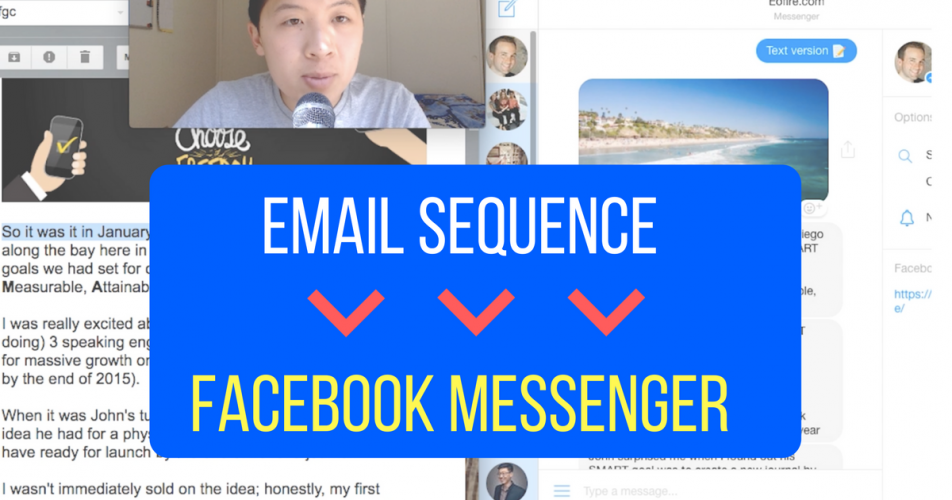Keep reading this article if you already have an email sequence that speaks to your target customer and sells your product/service.
Your sequence may convert decently well but conversions have probably dropped off since you first created it. That shouldn’t surprise you since many people are not using email and prefer communicating with messaging apps.
Now you can pick up more open rates, click rates, and revenue with selling through Facebook Messenger.
We believe in providing value, building a strong relationship with your customer, and then selling to them products/services that will benefit their lives.
John Lee Dumas, founder of Entrepreneur On Fire, believes this too and we took his email sequence and converted it into Messenger. Here is a glimpse of his analytics from Messenger alone.
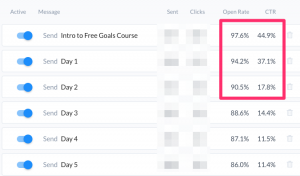
Writing and selling through email is radically different than writing + selling through Facebook Messenger… and it can be highly profitable to be on both platforms.
But if you are going to sell on Facebook Messenger, you want to do it the right way.
I want to make it clear that copywriting in Messenger is much different than copywriting for email. The same psychological principles apply but the platform is totally different.
It is simple to learn and extremely difficult to master.
This article will show you how to recreate the same email sales funnel into messenger… to communicate to where your customers are actually at.
I highly recommend watching the full video above because it is the most in-depth piece of content out there on this topic.
If you prefer to read, I highlighted the main points below and you can refer back to the video for future use when you want to dive deeper into this topic.
Let’s dive right in.
1. Pick your goal
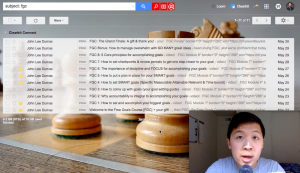
John’s goal was to use the messenger chatbot to sell more Freedom Journals, a product that helps people accomplish their goals (ironically).
John had a email sequence set up already educating people how to accomplish their goals with soft and hard sells mixed in for the Freedom Journal.
The only problem was that the open and click rates on this email sequence is not as high as John would like.
That’s where Messenger chatbots comes in.
2. Figure out the message’s core
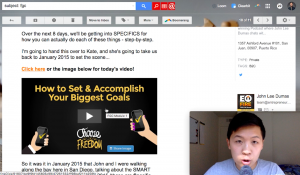
John sends extremely long messages with several hundred words in each email. As a chatbot creator and as copywriters, our job is to get to the message’s core and throw away everything else.
We don’t send several hundred words to our friends on Messenger.
We send 1 or 2 sentences per text bubble, multiple bubbles at a time, with emojis and stickers.
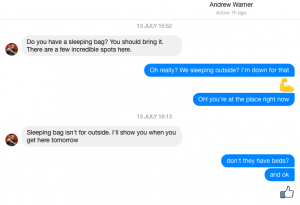
When we create experiences on Messenger, we need to adapt to what our users are used to, which are short and engaging messages.
I copied and pasted John’s email into a Google doc, highlighted the most important parts, and deleted the rest.
3. Convert email speak to messenger speak
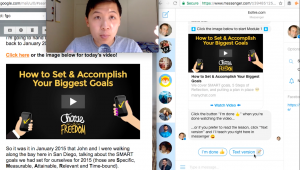
Since John gives his audience the option to either read the whole email or watch his 10 minute video, I did the exact same thing with Messenger.
Most people on Messenger are using it on the go so they would prefer to learn by engaging with your chatbot and clicking through the buttons.
That’s why I added “Text version” so users so learn from reading.
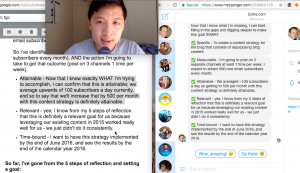
I took John’s long paragraphs and made it into bite sized bubbles.
Looking back, my copy is still REALLY long but at least ~200 words is better than ~1,000 words in an email.
I try to write like I speak on Messenger.
A good question to ask yourself is “would I actually text something like this to my friend?”
4. Repeat for each message
John had over 10 emails in his Free Goals sequence and I did the hard work of editing each message down to it’s core… and making it Messenger friendly.
This is a LOT of work.
You need to test it with the client you’re working with and with actual users.
We ran a test for only a few hundred subscribers to see how people were using it and improved the messages where we saw people drop off.
Nothing is more true than real user feedback.
Good luck with creating amazing sequences for your business! Watch the full video (if you haven’t already) to dive deeper into this subject.

